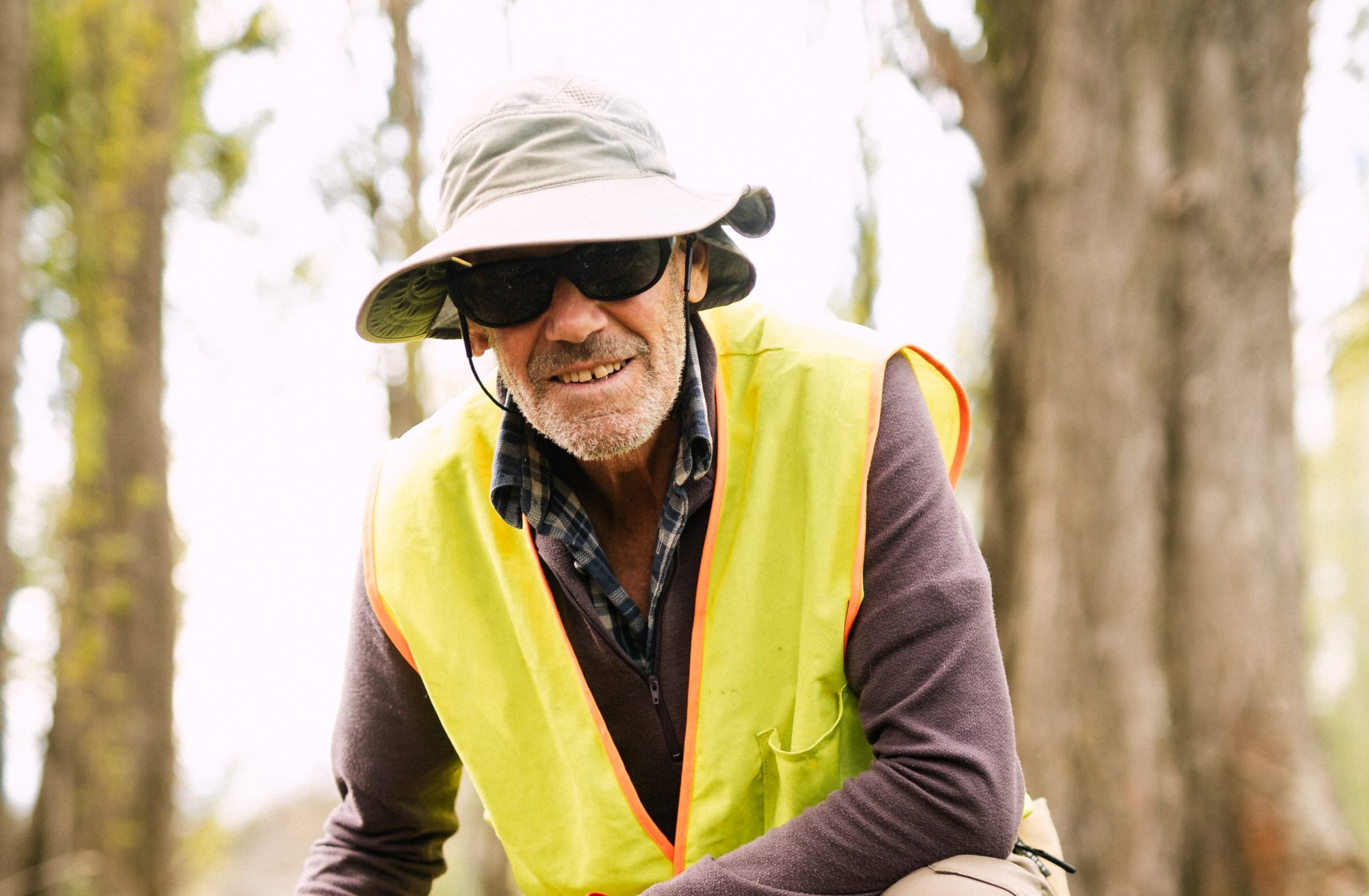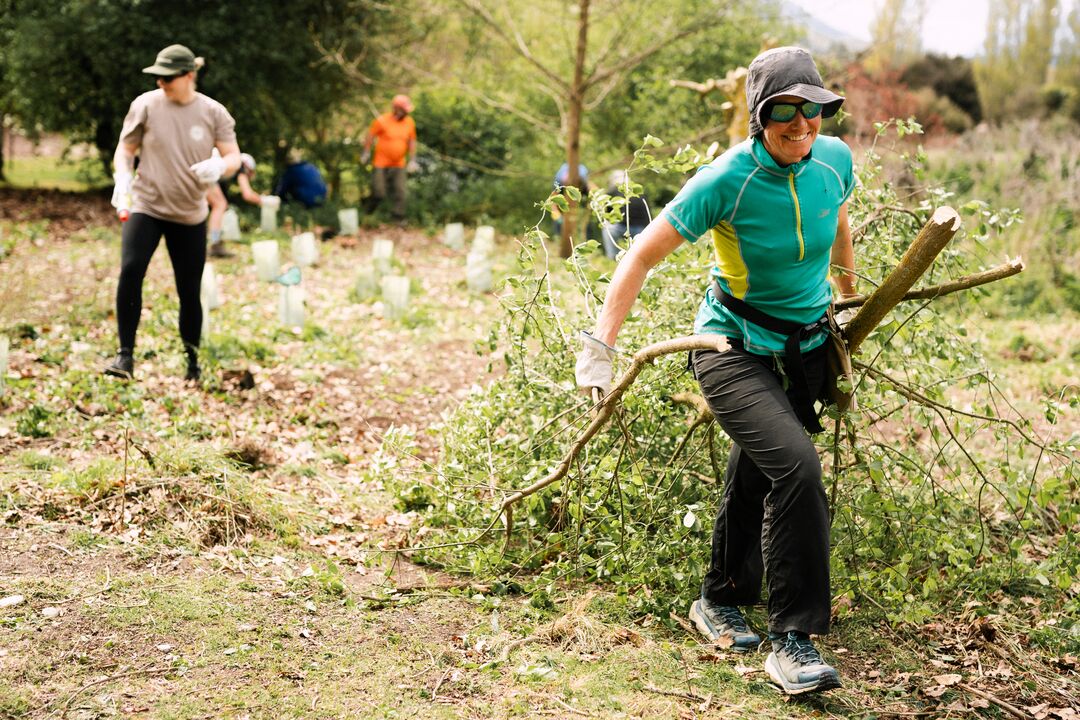Mount Roy is one of Aotearoa New Zealand’s most well-known maunga | mountains, home to native flora and fauna, a working farm, and undeniably one of the best views around, with locals and visitors alike flocking to capture her beauty. In recent years though, wilding conifers have been found on the face of Mount Roy, threatening these iconic views and posing many more sinister threats. This invasive species spreads quickly, increases risk of wildfire, and harms biodiversity and soil quality.
This year, the Upper Clutha Wilding Tree Group (UCWTG) was awarded an inaugural Love Wānaka Impact Grant to support their fight against the threat of wilding tree species. With this funding, UCWTG set out to remove a stand of wilding conifers from the face of Mount Roy, which were spreading seedlings across the otherwise wilding-free mountain range and beyond.
Hunting down and removing wilding trees is no easy feat, and it takes a seasoned conservationist like UCWTG’s planner Arne Cleland to lead the team. We joined Arne at a recent volunteer session at Templeton Park in Albert Town to tackle some wildings closer to home, in between learning about the Mount Roy project and Arne’s journey from running native nurseries in Gore to maintaining our stunning environment in Wānaka.
Arne, and his equally passionate wife Jenny, established Pukerau Nursery in 1979, one of the principal growers of native plants in Southland and Otago. Forty years later, they moved to Wānaka with the idea of retiring, but were quickly put to good use by Te Kākano Aotearoa Trust and WAI Wānaka.
Arne’s interest in wilding trees and their impact on our famed landscapes piqued when he observed the monumental challenge these species posed in Queenstown and surrounding areas. Though Wānaka was not yet at this stage, Arne realised there was no local organisation set up to monitor or prevent the spread. Wilding conifers, commonly referred to as wilding pines, are now recognised as a major threat by the Otago Regional Council under the Regional Pest Management Plan.
Along with Jenny and a group of like-minded friends, Arne set up the Upper Clutha Wilding Tree Group in 2022 – a community-led, non-profit organisation that supports the conservation and preservation of Wānaka’s native ecosystems through the removal of wilding tree species.
Wilding conifer control work can only be carried out and addressed through the collaboration of landowners, community groups, industry and researchers, along with local and central government. Alongside getting his hands dirty, Arne’s role is to work with these groups to collaborate, identify, fund, plan and implement projects.
“I can look at an invasive tree species and quickly do the math – the future cost of leaving it to spread, or the resources required to remove it and protect our unique landscape.” – Arne Cleland
The Mount Roy project was a challenging and costly one, as the stand of wilding conifers identified were spread across three different properties and along multiple fence lines. This meant that the ‘drill and fill’ option was not available and required UCWTG to fly in specialist arborists with their gear to dismantle and remove the trees.
With the help of the $10,000 Love Wānaka Impact Grant, the UCWTG implemented their first major operation. “It was a very high-profile site which enabled the wilding pine conversation to get into the public domain. It has been a positive local initiative through Love Wānaka” – Arne.
The Mount Roy conifer eradication project saw:
The removal of these pines will preserve existing plant cover, including tussocks and grey shrubland native species. There will also be reduced risk of fire and improved water availability for native species. And the risk of pines spreading into the DOC Stack Conservation Area in Waterfall Creek and to the south of Roy’s Peak has been eliminated, creating the opportunity for native ecosystems to thrive and extend over the main face.
Because conifer seeds stay in the soil for seven years, a big part of the project is still to come, with Arne’s team monitoring the site for the next ten years to keep on top of any regrowth.
You don’t have to be a seasoned conservationist or an expert arborist to play your part in preserving the natural biodiversity of our beautiful region. Here’s how you can get involved:
A few of these seemingly innocent garden store plants have been spotted spreading throughout the rohe | region, such a Chilean Mayten on the side of Mount Iron and Yellow Flag Iris around the lake. The seeds of the Iris are floating across the lake, then seeding on the shores of Glendhu Bay and Waterfall Creek. The plants spread quickly, are challenging to remove, and will require contractors to tackle them with chemicals. If you see a Yellow Flag Iris along the lake, take the flower heads off before they seed and pop them in the red waste bin – not your compost.
And last, but certainly not least, make a donation to the Love Wānaka Community Fund as an individual or sign up to be a Love Wānaka Impact Partner to support projects just like this. 100% of donations go to environmental action in the Wānaka region, helping us protect and regenerate our iconic landscapes – together.



